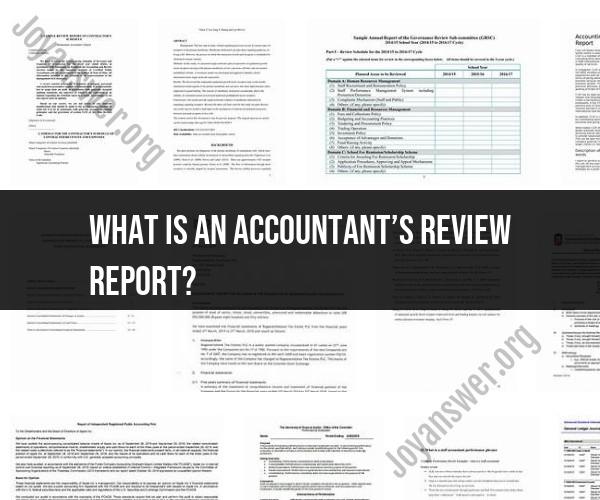What is an accountant’s review report?
An accountant's review report is a type of financial statement assurance engagement performed by a certified public accountant (CPA) or a qualified accounting professional. The purpose of an accountant's review is to provide limited assurance that the financial statements of an entity are free from material misstatement, whether due to error or fraud.
Here are some key points to understand about an accountant's review report:
Scope of the Review: Unlike a full audit, which provides a higher level of assurance, an accountant's review is more limited in scope. The accountant performs analytical procedures and inquiries to gain a reasonable basis for expressing limited assurance on the financial statements.
Limited Assurance: In an accountant's review, the accountant provides a statement of limited assurance that the financial statements are in accordance with generally accepted accounting principles (GAAP) or another applicable financial reporting framework. This means the accountant is less certain about the accuracy and completeness of the financial statements compared to an audit.
Procedures: During the review process, the accountant may perform various procedures, such as analytical review, inquiries with management, and testing of selected transactions and account balances. These procedures are designed to identify any significant issues that might indicate material misstatements in the financial statements.
Report Contents: The accountant's review report typically includes the following elements:
- A title that clearly indicates that it is a review report.
- An introductory paragraph stating the responsibilities of management for the financial statements and the responsibilities of the accountant.
- A description of the accountant's review procedures.
- A statement that the accountant's review provides limited assurance.
- A conclusion paragraph that expresses the accountant's conclusion on whether the financial statements are in accordance with the applicable financial reporting framework.
Use of the Report: The accountant's review report is intended for the use of the entity's management, stakeholders, and others who rely on the financial statements. It is not as comprehensive as an audit report, but it can provide some level of comfort regarding the accuracy of the financial information.
Comparison to an Audit: An accountant's review is less rigorous and provides lower assurance compared to a full financial statement audit. In an audit, the CPA provides a higher level of assurance and conducts more extensive testing and examination of financial records and internal controls.
Financial Statement Presentation: The financial statements that accompany the accountant's review report are typically presented in accordance with the applicable financial reporting framework, such as GAAP or International Financial Reporting Standards (IFRS).
Accountant's review reports are often used for smaller entities or when stakeholders require some level of assurance without the cost and thoroughness associated with a full audit. It's essential to carefully read and understand the contents of the review report, including any qualifications or limitations mentioned by the accountant, to assess the level of confidence one can place in the financial statements.












